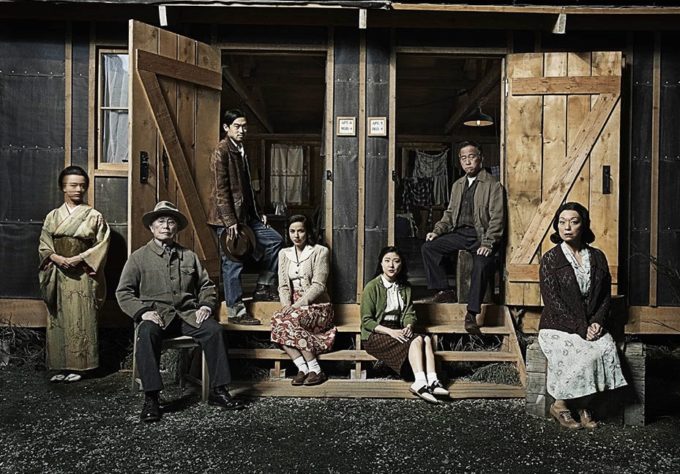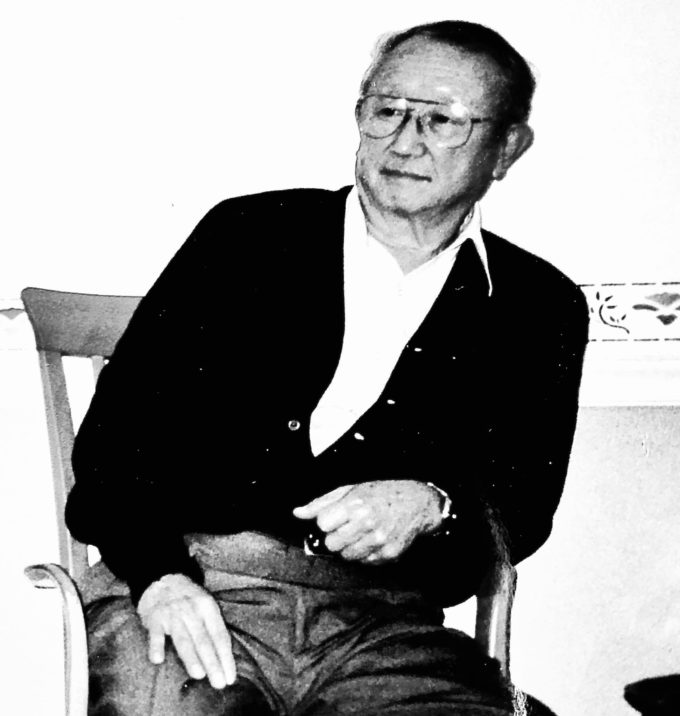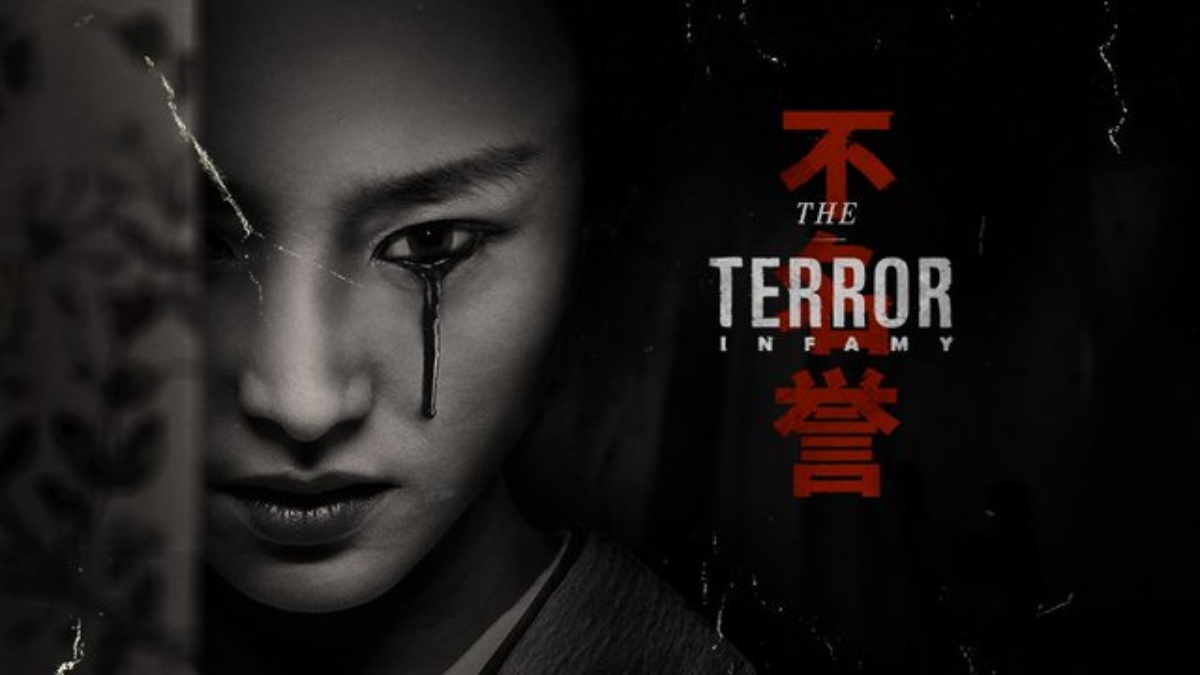Written By: Nathan Liu
Editor’s Note: This piece may contain some spoilers.
“Your people made this mess. Now you got to live with it.”
This statement is made about halfway through the seventh episode of “The Terror: Infamy.” And while a racist murderer does utter it, the line highlights a key flaw with the show.
For context, “The Terror” is a horror anthology series on AMC. Each season follows a new group of characters dealing with some sort of supernatural creature. The second season, “The Terror: Infamy,” is about a Japanese American family (parents Henry and Asako, son Chester, and daughter-in-law Luz) being haunted by a yurei, or vengeful female ghost, inside an internment camp. Over the course of the series, they learn that the demon is actually Asako’s dead sister, Yuko, and that they must find a way to lay her soul to rest, or else she will steal Chester and Luz’s baby.

(Photo by Maxine Helfman/AMC)
The scene in which the aforementioned line is uttered comes after the protagonists realize that there is a disease — possibly influenza — ripping through the camp and that the afflicted need to be taken to real hospitals. One of the main characters, Amy, goes to the camp’s commandant, Major Bowen, and asks if the sick may be transferred. Bowen, however, who has been witness to Yuko’s actions by this point, refuses, saying he won’t let anyone go until he gets some answers. Then he tells Amy that the appalling conditions the Japanese are living in are their fault. Again, his character is written to be racist. Still, his statement does encapsulate what the show itself seems to be arguing unintentionally: the Japanese are more to blame than the American government.
This sounds insane, until you realize that the Japanese directly cause virtually every bad thing that happens in the series. Primarily, there’s Yuko, the yurei, who provides most of the conflict and tension. Even when the characters are inside the camps, it is her, and not the white soldiers, who pose the biggest threat. She kills the most people, and it is her actions, like when she forces a random American private to jump off a watch tower, that get all the other Japanese in trouble. As a result, you find yourself thinking less about the horrific real-world situation that these people are in, and more about the evil demon lady lurking in the shadows.
Compared to her, the Americans seem harmless, almost like neutral parties just doing their duties without any real malice in their hearts. In fact, in the same episode as the “your people made this mess” line, Bowen exclaims, “this is just my goddamn job!” On top of this, there’s Yuko’s origin story to consider. She came over from Japan as a picture bride. But when her husband, a fellow Japanese immigrant, found out she was pregnant by another man, he threw her out and she committed suicide. It was her rage at not being able to be a mother that turned her into a yurei, and drove her to haunt her sister’s family.
Finally, there’s the fact that, in one episode, Henry, the father of the main family, is put in a separate prison facility. He is incarcerated because a fellow Japanese American, eager to get a job in the Department of Justice, falsely claims that he’s a spy. This subplot feels unnecessary since it never gets brought up past the third episode. And when taken with everything else, it doesn’t paint the Japanese in a positive light.
Now, in fairness to the show, I don’t believe this victim blaming is intentional. In addition to having an Asian American showrunner, Alexander Woo, and several Japanese American writers and directors, including Naomi Iizuka and Lily Mariye, everyone involved has made it clearthat this is a show meant to highlight the atrocities of that time. The season finale ends with a montage of cast and crew standing next to photos of relatives who were interned. The last frame of the series states: “For the 145,000 loyal Japanese Americans and Japanese Canadians wrongfully imprisoned by their governments.”
Another thing that’s noble about the show is how it touches upon all aspects of internment history. It displays the loyalty questionnaires prisoners were forced to fill out, what happened to those who didn’t, how Japanese Americans served in the Armed Forces, and how little they were given ($25) when they were finally released. My step-grandfather, Nelson Yuji Kitsuse, was interned and served in the Pacific as a translator. So many aspects of his real life experiences are included in this show. And yet, despite all that, I feel somewhat betrayed by the program, and a large part of that has to do with that aforesaid apparent victim blaming.
Not only does it contradict history, but it also undermines the showrunner’s intentions of highlighting the atrocities of the era. Which begs the question: Why would writers wanting to discuss actual history and discrimination against Japanese Americans tell a story that seems to suggest that it was their fault? Well that may have to do with the genre in which the story is being told: horror. By virtue of this being a supernatural fright fest, the show needs to do things like have creepy kills and explain the monster’s origin. These things then distract from the real life terror that the series is tackling.
When compared to an evil demon who possesses and murders people, an internment camp, which is shown to have schools, baseball games, dances and even movie screenings, seems less awful than it actually was. And while it’s true that the show does touch on all the key aspects of internment history, it does just that. Touch on them.
There are huge time jumps between episodes, with some taking place months, or even years, after the other. As such, the actual history feels rushed through in favor of the fictional horror story. And by having the monster be Japanese, the show shifts the audience’s focus away from the real life villains, the American government and soldiers. If the show had just been a drama about a family dealing with Internment, it would have avoided this.

Unfortunately, there’s a very real possibility that if it had just been that, it wouldn’t have been made. Back in the 1990s, there were two attempts by major American studios to bring the internment story to the screen, “Come See The Paradise” (1990) and “Snow Falling On Cedars” (1999). Both bombed at the box office. Producers likely looked at those failures and assumed that it was the internment stories themselves and not poor marketing, or the talents of the white filmmakers who made them, that doomed the projects. They probably assumed that the only way to tell an internment narrative would be to package it as something else; like a horror story.
And yet, despite all my protestations, I am glad that “The Terror: Infamy” exists. It’s not just that this is a big budget prestige show with Asian writers, directors and cast. It’s the fact that there are far too few mainstream films or TV series that explore the internment. And even fewer with people involved who were actually interned. George Takei, who acted as a script consultant, and who has a small role in the series, was sent to Rohwer Relocation Center and later Tule Lake War Relocation Center when he was a child. He is a living piece of history. It is truly remarkable to be able to have someone like him tell us his story on such a large platform. And we should listen, because he and the other survivors won’t be with us for much longer and we absolutely cannot forget this dark period in history.
So as flawed as the series is, as much as its messages are undermined by genre conventions and questionable storytelling choices, we should watch “The Terror: Infamy.” It is a show about the internment, featuring someone who lived through the internment. And we should continue to create content about the subject, because if we forget, then there’s nothing to stop us from doing what we did all over again.
“The Terror: Infamy” was a ten-episodes season that aired on AMC.

